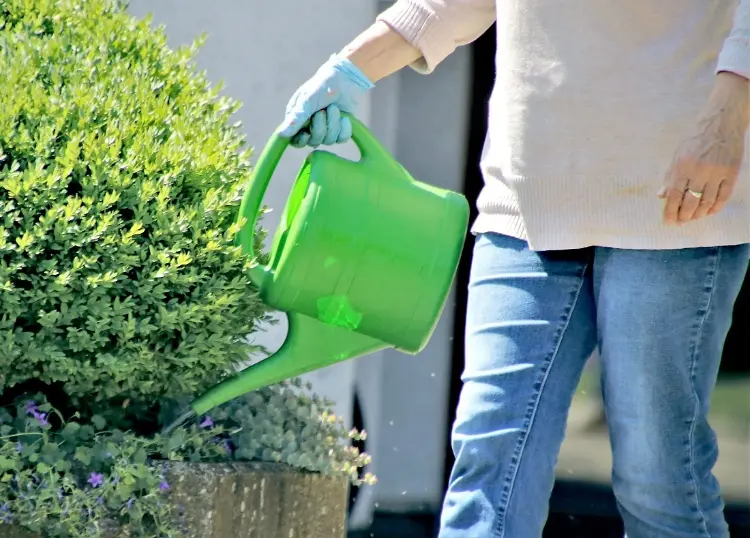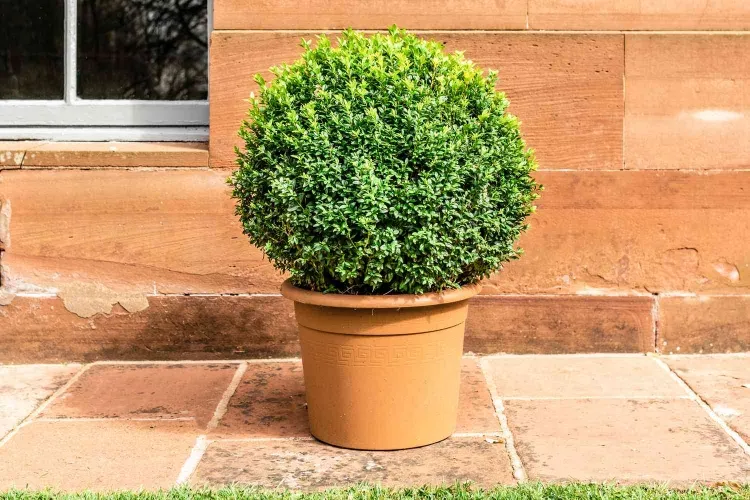Whether as a hedge plant or as a soloist in the bucket: the boxwood is particularly popular for its dense growth and dark green leaves. Proper care is very important to keep it healthy and growing quickly. Especially in summer you have to fertilize your boxwood, for example, to promote growth and strengthen the plant. When, how much and which home remedies and commercial fertilizers are suitable – we will tell you in the article.
Fertilize boxwood: When do you start fertilizing?
The boxwood is fertilized during the growth phase (i.e. around the end of April to the end of August). This growing season is divided into three periods:
- At the end of April, at the start of the gardening season, the boxwood is strengthened and supplied with all the necessary nutrients so that it can sprout quickly. For this purpose, in garden centers you can find slow-release fertilizers, which gradually release the necessary minerals and microelements into the soil. Alternatively, horn shavings can be incorporated into the soil. A combination of compost and coffee grounds is then administered in two weeks – this way the boxwood has everything it needs to sprout quickly.
- At the beginning of June, after a caring cut, the boxwood is fertilized again. This time the goal is to accelerate growth. To achieve this goal, fast-acting commercial fertilizers such as blue grain are used. A natural alternative to blue grain would be Epsom salt, which is an important supplier of magnesium and thus protects the hedge plant from leaf diseases.
- At the end of the growth phase, the boxwood gets a last dose of potassium fertilizer, which provides the plant with important nutrients so that it can get through the winter well. Wood ash and dandelion manure are natural alternatives.
- In special cases, such as after a moth infestation, the box tree needs special strengthening.
Fertilize boxwood: home remedies and tips for use
In the following we explain which other natural fertilizers are suitable and how to use them correctly.
Fertilize boxwood with algae lime after borer infestation

Box trees often fall victim to the box tree moth pest. Control measures begin with severe pruning and removal of all diseased parts of the plant. Then the boxwood is treated with home remedies or organic preparations. In the end, the wood needs strengthening so that it can recover. Algae lime can help with this. It allows better absorption of nutrients from the water in the soil and regulates the soil pH. Algae lime is also given to healthy neighboring plants to prevent re-infestation. The special thing about this fertilizer is the application. It is given directly on the leaves and stays there for a day. After the end of the exposure time, it is rinsed off.
Fertilize the potted plant with Epsom salt

The shrub also thrives as a solitary plant in a tub, as long as the soil is permeable. Many hobby gardeners incorporate sand into the potting soil to improve drainage. However, this method has a disadvantage – a magnesium deficiency often occurs. Epsom salt is administered to remedy this. The fertilizer is sold in powder form and then dissolved in water. About 20g is placed in a 1 liter spray bottle and then filled with water. The solution is sprayed directly on the leaves – then it unfolds its effect particularly quickly.
Fertilize the boxwood hedge with horn shavings, coffee grounds and compost

Do you have a box hedge? Then you should fertilize them in summer, around the middle to the end of June, directly after the topiary. A mixture of compost and horn shavings works well for this purpose. Work around 500 g of compost and 50 g of horn shavings into the root area per plant. If desired, you can add 1 tablespoon of coffee grounds to the fertilizer. Don’t overdo it with the coffee grounds though – too much of a good thing can reduce soil permeability. Do not apply fertilizer for the next 2 months. Apply potassium fertilizers only at the end of August.
Long-acting organic fertilizers: horse manure
There are also various long-acting organic fertilizers. Horse manure is definitely one of them. The household remedy promotes the microorganisms in the soil and is gradually decomposed. This avoids over-fertilization and the boxwood gets the necessary nutrients over a period of several weeks / up to two months.
Commercial boxwood fertilizer + blue grain

If you want to supply your boxwood with a commercially available fertilizer, you should opt for an NPK fertilizer 7+5+5. This ratio between nitrogen, phosphorus and potassium is optimal for the hedge plant and covers its nutrient requirements.
Blue grain, on the other hand, is not suitable as a fertilizer. It is only used in exceptional cases when the plants need nutrients quickly. Otherwise you shouldn’t use it.
The boxwood is one of the most popular hedge plants.